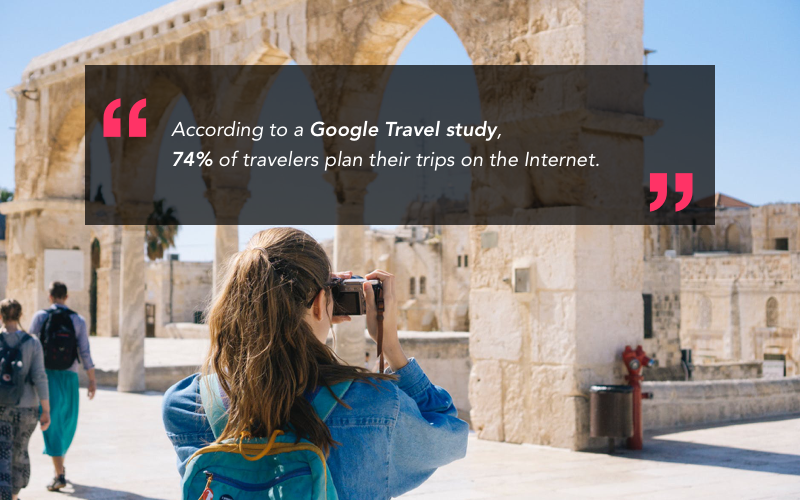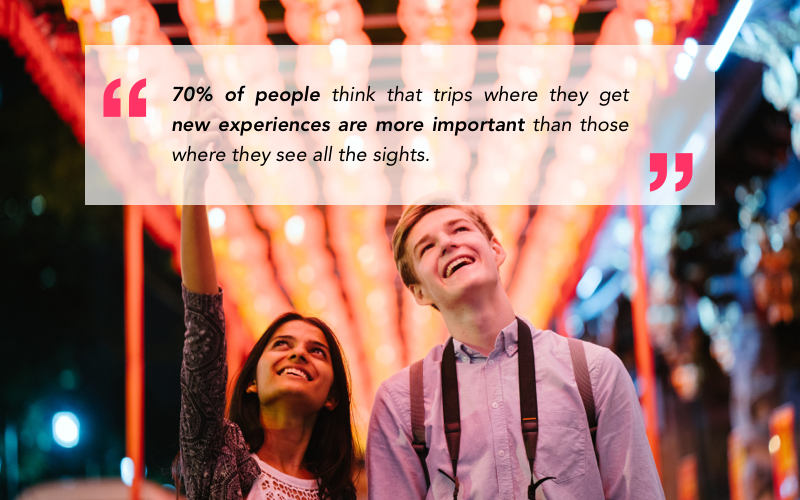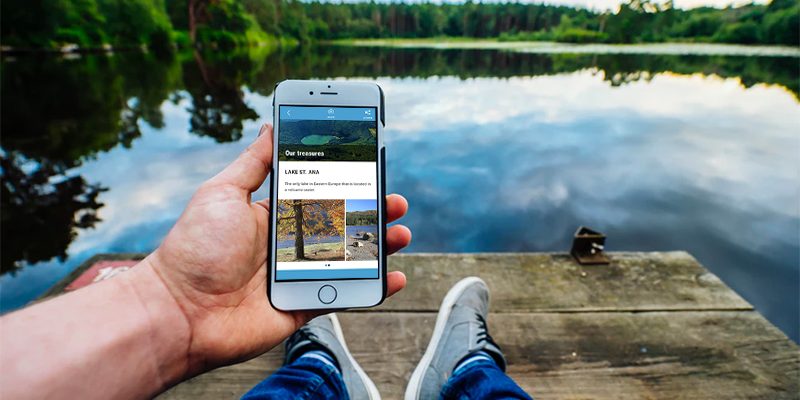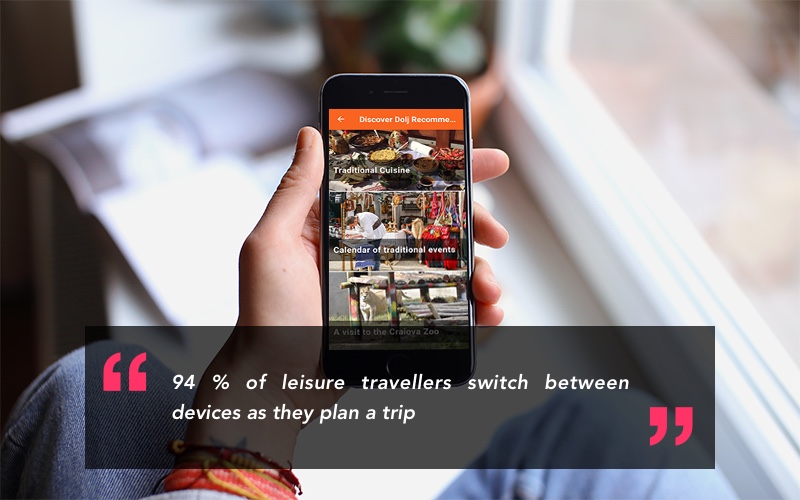According to the World Economic Forum’s Digital Transformation Initiative (DTI), from 2016 to 2025, digitalization in aviation, travel and tourism is expected to create up to US$305 billion of value for the industry.
The days of walking into a travel agency to inquire about travelling opportunities or browsing through guidebook or inflight magazine to plan our itinerary are long gone. Nowadays, travellers value the comfort that comes with mobile technology.
According to a Google Travel study, 74% of travellers plan their trips on the Internet. This is reinforced by the results presented in the ADI (Adobe Digital Insights) travel industry market research where it stated that 41% of the business and 60% of leisure travel arrangements are now made online.

According to the Good Life Study, 70% of people think that trips where they get new experiences are more important than those where they see all the sights.
The mobile phone has become our tour guide, travel agency, best restaurant locator, map, and more. Moreover, it seems like travellers don’t want to rely on travel guides anymore, they want to plan their own authentic experience and they use their smartphones to do it.
They use social media platforms, forums, blogs and user generated content to find experiences to match their needs.

Travelling is about discovery and connecting with other places and cultures. To stay relevant, destination marketing organizations (DMOs) need to change their communication style, destination marketing and engagement approach and embrace digitalization.
It’s time for you start reaching and connecting with visitors in a new, improved way. Leveraging mobile platforms and communication allows you to engage with travellers during each stage of their experience and enable them to discover new experiences within your destination.
Here are three mobile technologies that you can take advantage of right away:
1. Augmented Reality
Augmented reality (AR) has been recently adopted by the travel industry with more and more brands using it to promote their services, offerings and destinations.
Nowadays, the possibility to visit the most popular or remote corners of the world without even getting out of the house is real. This provides a great marketing opportunity for all DMOs interested in showcasing the beauty of their region, unique landscapes and breathtaking scenery.
Denmark is planning to turn a virtual reality exhibition exploring Viking history and Norse mythology into a permanent theme park. Visitors will be able to explore a complete Nordic environment while fighting mythological giants and dragons. In other parts of the world, VR technology is used to allow visitors to handle precious historical artefacts in virtual form or access a destination’s history and plans for the future simultaneously.

2. Voice Searches and Chatbots
The way we communicate with a brand is now being driven by mobile. We expect travel organizations to be present and respond to our inquiries on whatever platform we’re using. 1 in 5 adults uses mobile voice search at least one time a month, according to Global Web Index and 58% of consumers have used voice search to find local business information within the last year, a BrightLocal Study shows. Chatbots are also increasingly being utilized by the travel sector, as 69% of consumers prefer chatbots for quick communication with brands.
Intelligent chatbots are now designed to assist travelers throughout their trip. They can suggest holiday spots to match what travellers are looking for and to offer the best recommendations on hotels and flights. There is no doubt that allowing for voice searches and enabling chatbots for your visitors to use within your destination could exponentially enhance and improve their experience.
3. Mobile Apps and Responsive Websites
Recent Google research found that 94 percent of leisure travellers switch between devices as they plan a trip. When it comes to planning trip activities, 85 percent of leisure travellers decide on activities only after arriving at their destination, where they are most likely to use their mobile devices to do so.
A mobile app allows you to provide travellers with a comprehensive digital guide as well as fresh and relevant content and recommendations around top events and activities within your destination – available right at their fingertips. A responsive website, optimized for mobile will make sure you provide a user-friendly experience to your tourists at all stages of their trip planning no matter the device they are using.
Your mobile apps and website should first of all be evocative and use high quality images and videos to best highlight the top attractions within your destination. Integration with social media, collaboration with local entrepreneurs, guides and businesses as well as user-generated content is imperative. Your digital platform should also provide all the features tourists require to enjoy their time spent within your destination. Popular and unusual attractions, events, offers, accommodation, top restaurants, maps, audio guides in different languages on your apps and website will get your destination ready for digital tourism.
Technological advances have changed the way we travel. The have also spurred a shift in the creation, distribution and consumption of content. Learn from the best, see how Harghita County Council managed to reach and engage visitors through a comprehensive digital platform
Your own digital guide?
Interested in finding out how you can successfully promote your destination through a Travel App?




